Volume 9-14 (2020-26)
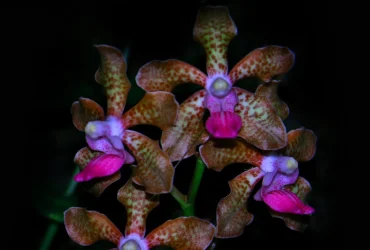 v13i2.345
v13i2.345ISSN: 1800-427X (printed)
eISSN: 1800-427X (online)
DOI:10.47605/tapro.v13i2.345
Submitted date: 17 January 2024
Accepted date: 13 August 2024
Published date: 19 December 2024
Pp. 146–147.
Three new records of butterflies from Madhabkundo Eco-Park in Bangladesh
T. Akhter*, M.A. Rahim, N. Tabassum & S. Hasan
*Corresponding author. E-mail: taniaaktar733@gmail.com
Butterflies belonging to the order Lepidoptera are widely distributed throughout the world. A recent systematic review documented 421 species of butterflies from Bangladesh. This study presents the first records of silver royal, Ancema blanka (de Niceville, 1894); common Faun, Faunis canens (Hübner, 1826); and the rediscovery of grey baron, Euthalia anosia (Moore, 1858) from Bangladesh after 137 years in Madhabkunda Eco Park (MEP; 24o38'25"N, 92o13'06"E), Moulvibazar District, northeastern Bangladesh.
Section Editor: Ángel L. Viloria
eISSN: 1800-427X (online)
DOI:10.47605/tapro.v13i2.345
Submitted date: 17 January 2024
Accepted date: 13 August 2024
Published date: 19 December 2024
Pp. 146–147.
Three new records of butterflies from Madhabkundo Eco-Park in Bangladesh
T. Akhter*, M.A. Rahim, N. Tabassum & S. Hasan
*Corresponding author. E-mail: taniaaktar733@gmail.com
Butterflies belonging to the order Lepidoptera are widely distributed throughout the world. A recent systematic review documented 421 species of butterflies from Bangladesh. This study presents the first records of silver royal, Ancema blanka (de Niceville, 1894); common Faun, Faunis canens (Hübner, 1826); and the rediscovery of grey baron, Euthalia anosia (Moore, 1858) from Bangladesh after 137 years in Madhabkunda Eco Park (MEP; 24o38'25"N, 92o13'06"E), Moulvibazar District, northeastern Bangladesh.
Section Editor: Ángel L. Viloria
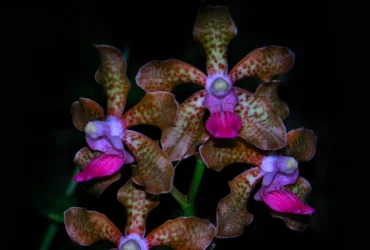 v13i2.344
v13i2.344ISSN: 1800-427X (printed)
eISSN: 1800-427X (online)
DOI:10.47605/tapro.v13i2.344
Submitted date: 29 April 2023
Accepted date: 13 August 2024
Published date: 19 December 2024
Pp. 144–145.
Recent observations on the hairy-nosed otter (Lutra sumatrana) in South Sumatra
N.L. Winarni*, Janjiyanto, A.A. Dwiyahreni, R. Rizqullah, S. Alam, M. Haris, L. Darmawan, S. Lesmana, N.A. Saputro, Y. Rosalina, R. Wandri, D. Asmono & J. Supriatna
*Corresponding author. E-mail: nwinarni@gmail.com
The hairy-nosed otter (Lutra sumatrana) is an endangered species of the family Mustelidae. It is a medium-sized otter with a distinct pale chin and upper lip and was once believed to be extinct in the wild. However, to date, only a few specimen measurements have been published. In Sumatra, two reported sightings were from Sekayu, Palembang, and Bukit Barisan Selatan National Park. Another evident sighting from Palembang was a road kill. Here we report a few sightings from South Sumatra.
Section Editor: Reza Lubis
eISSN: 1800-427X (online)
DOI:10.47605/tapro.v13i2.344
Submitted date: 29 April 2023
Accepted date: 13 August 2024
Published date: 19 December 2024
Pp. 144–145.
Recent observations on the hairy-nosed otter (Lutra sumatrana) in South Sumatra
N.L. Winarni*, Janjiyanto, A.A. Dwiyahreni, R. Rizqullah, S. Alam, M. Haris, L. Darmawan, S. Lesmana, N.A. Saputro, Y. Rosalina, R. Wandri, D. Asmono & J. Supriatna
*Corresponding author. E-mail: nwinarni@gmail.com
The hairy-nosed otter (Lutra sumatrana) is an endangered species of the family Mustelidae. It is a medium-sized otter with a distinct pale chin and upper lip and was once believed to be extinct in the wild. However, to date, only a few specimen measurements have been published. In Sumatra, two reported sightings were from Sekayu, Palembang, and Bukit Barisan Selatan National Park. Another evident sighting from Palembang was a road kill. Here we report a few sightings from South Sumatra.
Section Editor: Reza Lubis
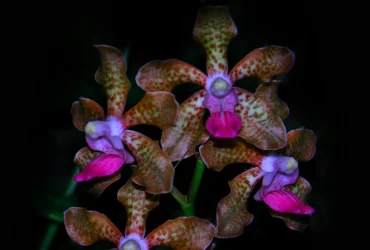 v13i2.343
v13i2.343ISSN: 1800-427X (printed)
eISSN: 1800-427X (online)
DOI:10.47605/tapro.v13i2.343
Submitted date: 11 July 2023
Accepted date: 10 July 2024
Published date: 14 December 2024
Pp. 142–143.
Range expansion of clouded silverline butterfly (Cigaritis nubilus) in Sri Lanka
P.K. Dissanayake, H.H.C.U. Herath, K.G.S.N. Vajirasena, D.M.N.P. Daundasekara & B.C. Wijamunige
*Corresponding author. E-mail: kapila@agri.sab.ac.lk
Clouded Silverline, Cigaritis nubilus (Moore, 1887) is a small butterfly belonging to the family Lycaenidae and is endemic to Sri Lanka. It has wings with a brick-red background on the underside of the wings. There are silvery and dark red lines across the undersides of both wings. The upper side of the hind wings is dark, bright blue in males, whereas in females it is greyish. It is considered a rare butterfly, as it has historically been recorded only in a few places in the dry northern part of Sri Lanka.
Section Editor: Konrad Fiedler
eISSN: 1800-427X (online)
DOI:10.47605/tapro.v13i2.343
Submitted date: 11 July 2023
Accepted date: 10 July 2024
Published date: 14 December 2024
Pp. 142–143.
Range expansion of clouded silverline butterfly (Cigaritis nubilus) in Sri Lanka
P.K. Dissanayake, H.H.C.U. Herath, K.G.S.N. Vajirasena, D.M.N.P. Daundasekara & B.C. Wijamunige
*Corresponding author. E-mail: kapila@agri.sab.ac.lk
Clouded Silverline, Cigaritis nubilus (Moore, 1887) is a small butterfly belonging to the family Lycaenidae and is endemic to Sri Lanka. It has wings with a brick-red background on the underside of the wings. There are silvery and dark red lines across the undersides of both wings. The upper side of the hind wings is dark, bright blue in males, whereas in females it is greyish. It is considered a rare butterfly, as it has historically been recorded only in a few places in the dry northern part of Sri Lanka.
Section Editor: Konrad Fiedler
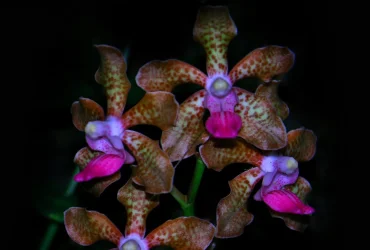 v13i2.342
v13i2.342ISSN: 1800-427X (printed)
eISSN: 1800-427X (online)
DOI:10.47605/tapro.v13i2.342
Submitted date: 3 September 2024
Accepted date: 19 November 2024
Published date: 22 December 2024
Pp. 141, pl. 32.
The pigmented reticulated pattern on 1st tergite of Scolopendra mirabilis from India
S. Mukherjee, S. Ray* & P.G.S. Sethy
*Corresponding author. E-mail: new.sumidh@gmail.com
Scolopendra mirabilis (Porat, 1876) is a species of centipede widely distributed in India, Southwest Asia, and East Africa. In India, it is recorded from Rajasthan and Maharashtra. During a recent survey, we found a specimen of S. mirabilis near Badar Mata Ka Prachin Mandir (26.5363°N, 74.5958°E), Pushkar, Ajmer District, Rajasthan, India on 27 March 2024. We deposited it in the Zoological Survey of India, Kolkata (ZSIK-TC-0094). The specimen's habitat was the arid sandy slopes of the Aravalli range. The area is sparsely vegetated, mostly by Acacia species (Fabaceae). Following Lewis & Gallagher (1993) and Lewis (2010), we identified the species. The body length of the specimen was 48.1 mm; posterior half of head plate with anteriorly diverging paramedian sutures delimiting basal plates; forcipular coxosternum with ramifying sutures laterally; a ramifying sutures-like pigmented pattern on the first tergite (Fig. 1); margination in tergites starts from tergite 17; tergite 21 with a median longitudinal suture; sternite with weak paramedian sutures; coxopleural process with 4 spines and 1 side spine; prefemora of ultimate legs with twelve spines ventrally; tarsus of ultimate leg without spur. Further study is required to understand its phylogenetic relationship as well as ecology and habitats.
Section Editor: David Cabanillas
eISSN: 1800-427X (online)
DOI:10.47605/tapro.v13i2.342
Submitted date: 3 September 2024
Accepted date: 19 November 2024
Published date: 22 December 2024
Pp. 141, pl. 32.
The pigmented reticulated pattern on 1st tergite of Scolopendra mirabilis from India
S. Mukherjee, S. Ray* & P.G.S. Sethy
*Corresponding author. E-mail: new.sumidh@gmail.com
Scolopendra mirabilis (Porat, 1876) is a species of centipede widely distributed in India, Southwest Asia, and East Africa. In India, it is recorded from Rajasthan and Maharashtra. During a recent survey, we found a specimen of S. mirabilis near Badar Mata Ka Prachin Mandir (26.5363°N, 74.5958°E), Pushkar, Ajmer District, Rajasthan, India on 27 March 2024. We deposited it in the Zoological Survey of India, Kolkata (ZSIK-TC-0094). The specimen's habitat was the arid sandy slopes of the Aravalli range. The area is sparsely vegetated, mostly by Acacia species (Fabaceae). Following Lewis & Gallagher (1993) and Lewis (2010), we identified the species. The body length of the specimen was 48.1 mm; posterior half of head plate with anteriorly diverging paramedian sutures delimiting basal plates; forcipular coxosternum with ramifying sutures laterally; a ramifying sutures-like pigmented pattern on the first tergite (Fig. 1); margination in tergites starts from tergite 17; tergite 21 with a median longitudinal suture; sternite with weak paramedian sutures; coxopleural process with 4 spines and 1 side spine; prefemora of ultimate legs with twelve spines ventrally; tarsus of ultimate leg without spur. Further study is required to understand its phylogenetic relationship as well as ecology and habitats.
Section Editor: David Cabanillas
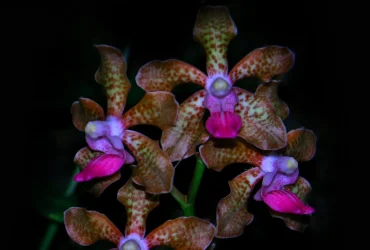 v13i2.341
v13i2.341ISSN: 1800-427X (printed)
eISSN: 1800-427X (online)
DOI:10.47605/tapro.v13i2.341
Submitted date: 11 July 2023
Accepted date: 10 July 2024
Published date: 14 December 2024
Pp. 138–140, pls. 30–31.
Genetic diversity and population structure of Crudia zeylanica (Fabaceae), Sri Lanka
M.G.C. Sooriyabandara, P. Wimaladasa, C.H.W.M.R.B. Chandrasekara, R.M.R. Nilanthi & P.C.G. Bandaranayake
*Corresponding author. E-mail: csooriyabandara@gmail.com
The genus Crudia (Schreb.) belongs to the family Fabaceae and is named after J.W. Crudy (1753–ca.1810), a plant collector from the Bahamas (Lanjouw & Stafleu 1954). The genus is pantropical and consists of approximately 55 species, mostly from Asia with others from Africa and tropical America. The species was first discovered and originally described as Detarium zeylanicum (Thwaites, 1864) and assigned to the genus Crudia in 1865 (Bentham 1865). The holotype was collected from Galpatha, Kaluthara District, and deposited at the National Herbarium of Peradeniya under C.P number 3714. Since then, there have been no further records of this species from the field and it has been categorised as extinct species in the IUCN Red List of 2006 and the National Red List of 2012. Crudia zeylanica was rediscovered in 2019 when a mature tree was identified based on its morphology in the Gampaha District of Sri Lanka. Subsequent explorations in the same district identified seven populations consisting of mature trees, saplings, and seedlings. With these findings, the National Red List of 2020 categorized C. zeylanica as a Critically Endangered (CR) species. Further, it is a protected species under the provisions of the Fauna and Flora Protection Ordinance of Sri Lanka.
Section Editor: Wendy A. Mustaqim
eISSN: 1800-427X (online)
DOI:10.47605/tapro.v13i2.341
Submitted date: 11 July 2023
Accepted date: 10 July 2024
Published date: 14 December 2024
Pp. 138–140, pls. 30–31.
Genetic diversity and population structure of Crudia zeylanica (Fabaceae), Sri Lanka
M.G.C. Sooriyabandara, P. Wimaladasa, C.H.W.M.R.B. Chandrasekara, R.M.R. Nilanthi & P.C.G. Bandaranayake
*Corresponding author. E-mail: csooriyabandara@gmail.com
The genus Crudia (Schreb.) belongs to the family Fabaceae and is named after J.W. Crudy (1753–ca.1810), a plant collector from the Bahamas (Lanjouw & Stafleu 1954). The genus is pantropical and consists of approximately 55 species, mostly from Asia with others from Africa and tropical America. The species was first discovered and originally described as Detarium zeylanicum (Thwaites, 1864) and assigned to the genus Crudia in 1865 (Bentham 1865). The holotype was collected from Galpatha, Kaluthara District, and deposited at the National Herbarium of Peradeniya under C.P number 3714. Since then, there have been no further records of this species from the field and it has been categorised as extinct species in the IUCN Red List of 2006 and the National Red List of 2012. Crudia zeylanica was rediscovered in 2019 when a mature tree was identified based on its morphology in the Gampaha District of Sri Lanka. Subsequent explorations in the same district identified seven populations consisting of mature trees, saplings, and seedlings. With these findings, the National Red List of 2020 categorized C. zeylanica as a Critically Endangered (CR) species. Further, it is a protected species under the provisions of the Fauna and Flora Protection Ordinance of Sri Lanka.
Section Editor: Wendy A. Mustaqim
Hubungi Kami
The ultimate aim of the journal is to provide an effective medium for communication of the latest and best scientific information.
Copyright © 2020 Taprobanica. All Rights Reserved
Jasa Pembuatan Website by IKT




